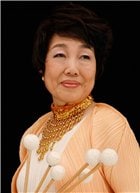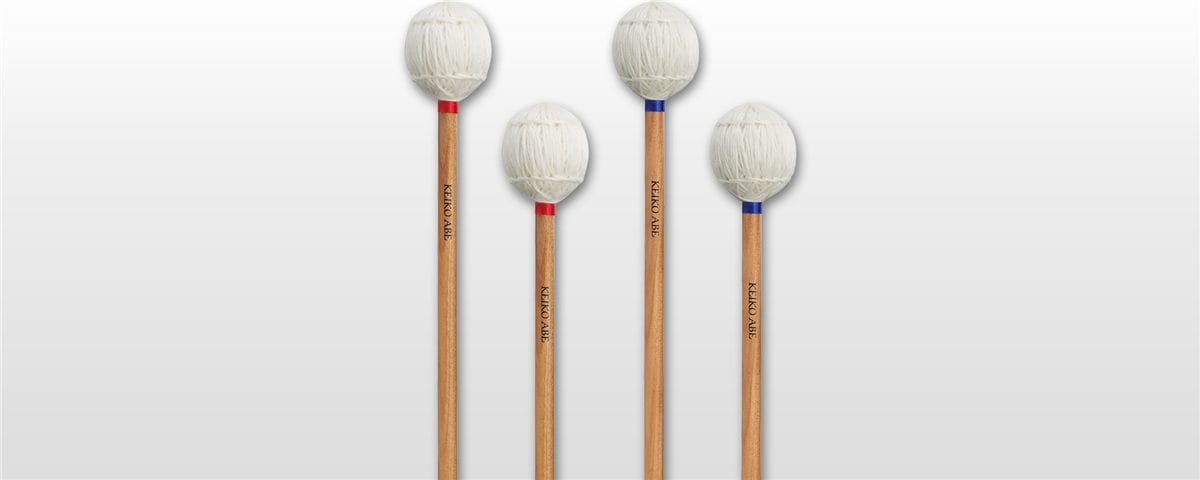Modelos com assinatura de Keiko Abe Keyboard Mallets
Cabo
Os cabos são 3cm mais largos (1 a 1,8 polegadas) que noutras baquetas da Yamaha*, permitindo que estes bilros sejam especialmente adequados para as exigências da música contemporânea. Para que possam ser compatíveis com uma grande variedade de estilos musicais, são fabricados em dois tipos de materiais: rattan (MKA) e bétula (MKAW). * Exceto os modelos MKA(W)-02 e MKA(W)-01.
MKA-01 (Rattan shaft)

MKAW-01 (Birch shaft)

Cabeça
The round yarn wound heads are heavier than standard mallets, but they are fully capable of delivering delicate expression. Also, to obtain optimum flexibility from the shaft, careful consideration has been taken in achieving optimum balance between weight and shaft thickness when materials to be used in each mallet model were chosen.
Com o bilro de dois tons MKA(W)-01, as diferenças de intensidade nos golpes notam-se muito mais no tom.
[MKA(W)-02/03] MKA(W)-02 and MKA(W)-03 utilize short shafts for fast, intricate mallet work. Hard to tell by looking, but the added weight in the mallet heads offers the percussionist greater possibilities in playing.
[MKA(W)-04/05/06/07/S7] The MKA(W)-04 through S7 are based on Yamaha’s Professional series with a rubber tube wrapped around its core. This design offers a slightly different touch that delivers greater expressiveness with enhanced sensitivity.
Os modelos MKA(W)-08 e 09 foram concebidos para obter o melhor som a partir das lâminas de pau-rosa nos tons mais graves da marimba.

Perfil de Keiko Abe

Appearing regularly in performances around the world, Keiko Abe continuously astonishes audiences with her rare combination of creative power, acute sensitivity and virtuoso technique. It is these qualities that have made her a leading force in the development of the marimba as a consummate concert instrument. Her command of an overwhelming repertoire allows her performances to range from solo concerts to chamber music and improvisations. While her compositions have become standards of marimba literature many composers have dedicated new works to her and she has inspired and premiered countless new compositions.
In addition to her work as Professor Emeritus of Music at Toho Gakuen School of Music in Tokyo, Japan, she is in demand as a guest lecturer and has presented master classes in more than 100 of the leading music conservatories in North America, Europe and Asia. She has also released over 50 recordings and received numerous awards, including becoming the first woman elected to the Percussive Arts Society Hall of Fame in 1993.





